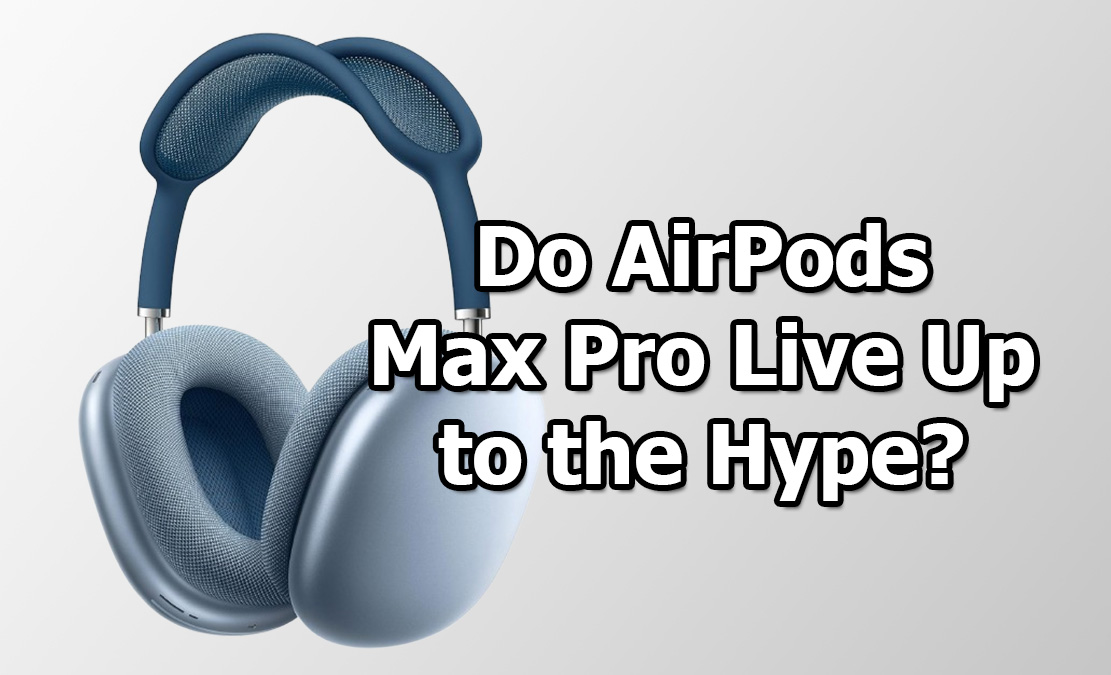The AirPods Max Pro have sparked a lot of excitement, promising to raise the bar for premium over-ear headphones. Apple’s flagship model, featuring Active Noise Cancellation (ANC), custom drivers, and spatial audio, has wowed many. But the question remains: do they live up to the hype?

Design and Build Quality
Apple never skimps on design, and the AirPods Max Pro are no exception. Crafted with a sleek aluminum finish and memory foam ear cups, they offer both luxury and durability. The headband, made of breathable knit mesh, reduces pressure on your head, ensuring maximum comfort.
While some have found them heavier compared to other brands, the overall build screams premium quality. They feel like a well-thought-out, high-end product, as expected from Apple.
Sound Performance
The most crucial aspect of any headphones is sound quality, and here, the AirPods Max Pro deliver spectacularly. With custom-built dynamic drivers and an H2 chip, the sound performance is nothing short of impressive.
The bass is deep yet controlled, mid-tones are crisp, and the highs are exceptionally clear. Whether you’re listening to music, watching movies, or playing games, the spatial audio feature creates an immersive experience that feels almost like being in a home theater.
Active Noise Cancellation
Apple’s noise cancellation technology in the AirPods Max Pro is top-tier. The ANC effectively eliminates external noise, whether you’re in a bustling city or on a plane. By combining multiple microphones, the headphones create a noise-free environment, allowing you to focus entirely on your audio content.
Transparency mode, which lets in ambient sound, works flawlessly, too. It’s incredibly useful when you need to stay aware of your surroundings without having to take the headphones off.
Battery Life and Charging
With up to 20 hours of listening time with both ANC and spatial audio enabled, the AirPods Max Pro are competitive but not groundbreaking in terms of battery life. However, their ability to charge quickly is a redeeming factor—just a few minutes of charging can provide up to an hour of playback.
Apple’s Smart Case, designed to preserve battery life when not in use, helps extend overall usage. While it’s an improvement, some users have found the case less practical for portability and protection.
Connectivity and Features
Pairing AirPods Max Pro with an iPhone or other Apple devices is seamless thanks to Apple’s ecosystem integration. Switching between Apple devices, such as your iPhone, Mac, or iPad, is smooth and automatic.
The headphones also support Siri for hands-free control, and the inclusion of sensors like the gyroscope and accelerometer enhances the spatial audio experience.
However, these features shine brightest in the Apple ecosystem. If you’re using the headphones with non-Apple devices, you might miss out on some of the unique perks like seamless switching and full functionality of spatial audio.
Pricing: Are They Worth It?
With a price tag that’s higher than most premium headphones, the AirPods Max Pro are definitely a significant investment. But considering the design, sound quality, and advanced features, they’re more than just headphones—they’re a luxury listening experience.
For Apple users who want seamless integration, superb sound, and top-notch noise cancellation, the AirPods Max Pro justify their price. For those on a budget or not tied into Apple’s ecosystem, it might be worth exploring other high-end options that offer similar performance at a lower cost.
Conclusion
So, do AirPods Max Pro live up to the hype? For many, the answer is yes. The combination of stunning design, immersive sound, and superior ANC makes them a top contender in the world of premium headphones. However, their high price and heavy design may not appeal to everyone, especially non-Apple users.
But for those deeply invested in Apple’s ecosystem, the AirPods Max Pro offer an unparalleled experience that justifies the hype—and the price.
Also Check:
- Why Isn’t My AirPods Max Connecting? 10 Ways You Can Fix It
- Should I Upgrade to the AirPods Max Pro? Here are 5 Reason Why You…
- Amazon Next-Generation Echo Show 8 Review: How This Smart Display Reshaped My Home Setup
- Amazon Fire Stick 4K vs Fire Stick 4K Max: Features, Performance, and Which One to Choose in 2024
- PS5 Pro Review – Is Sony’s New Console Worth the Upgrade?
